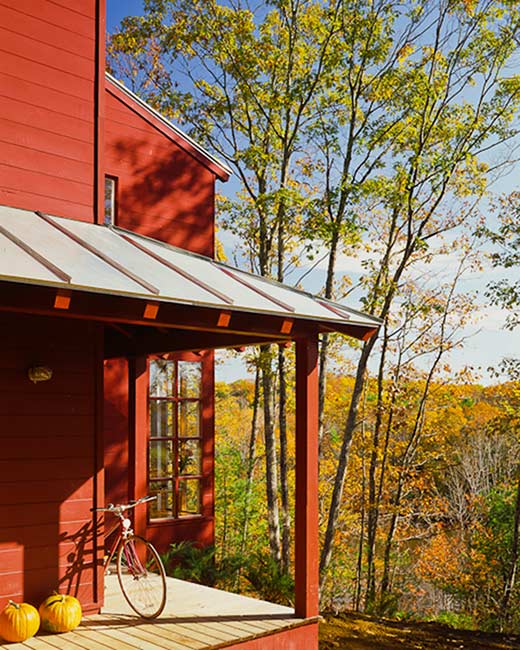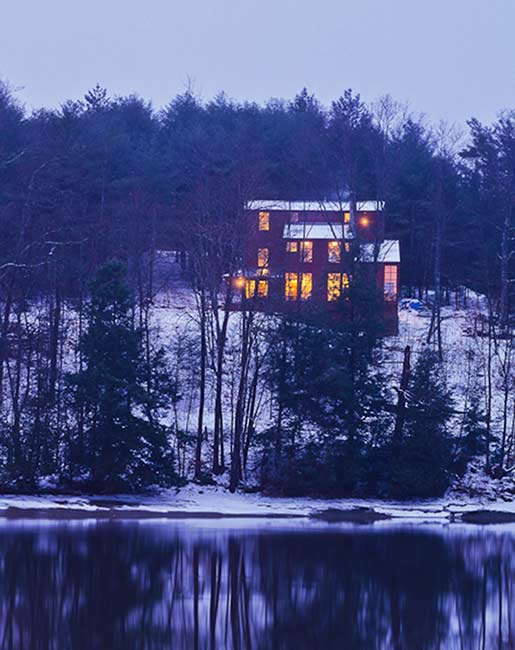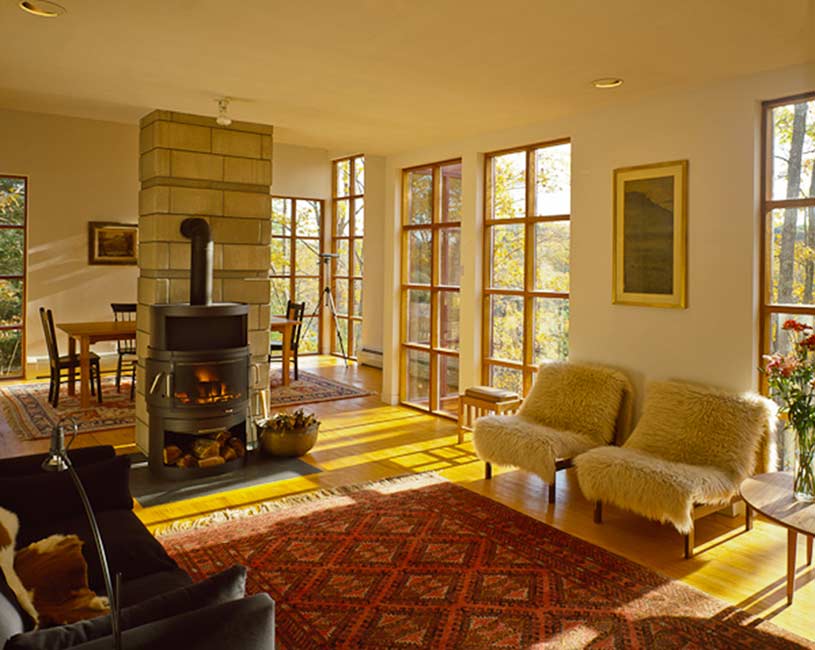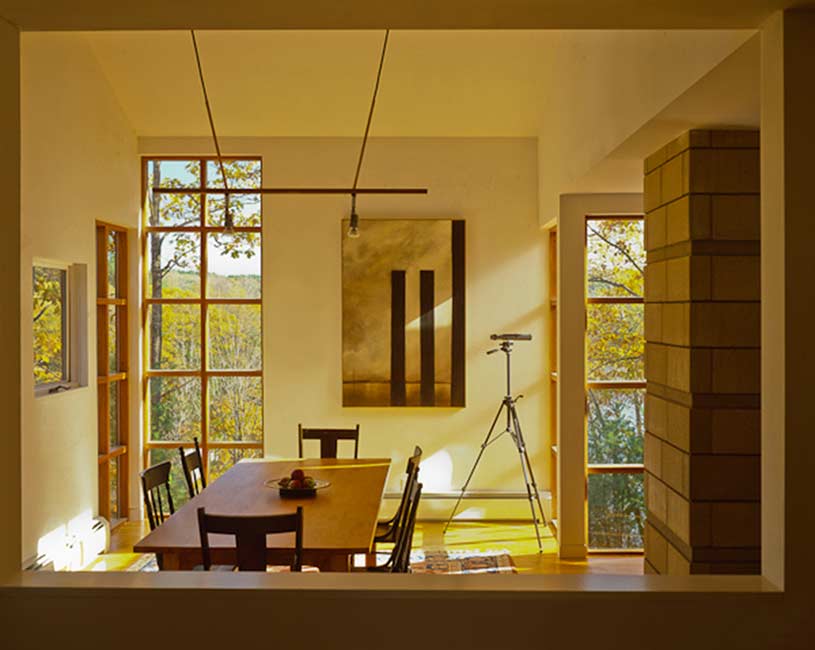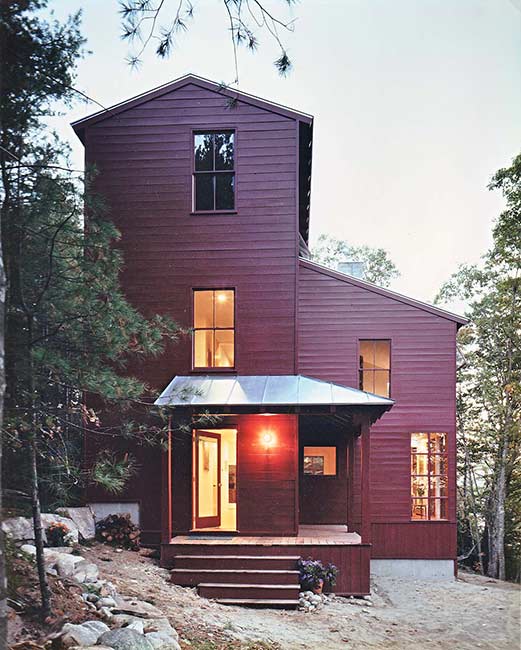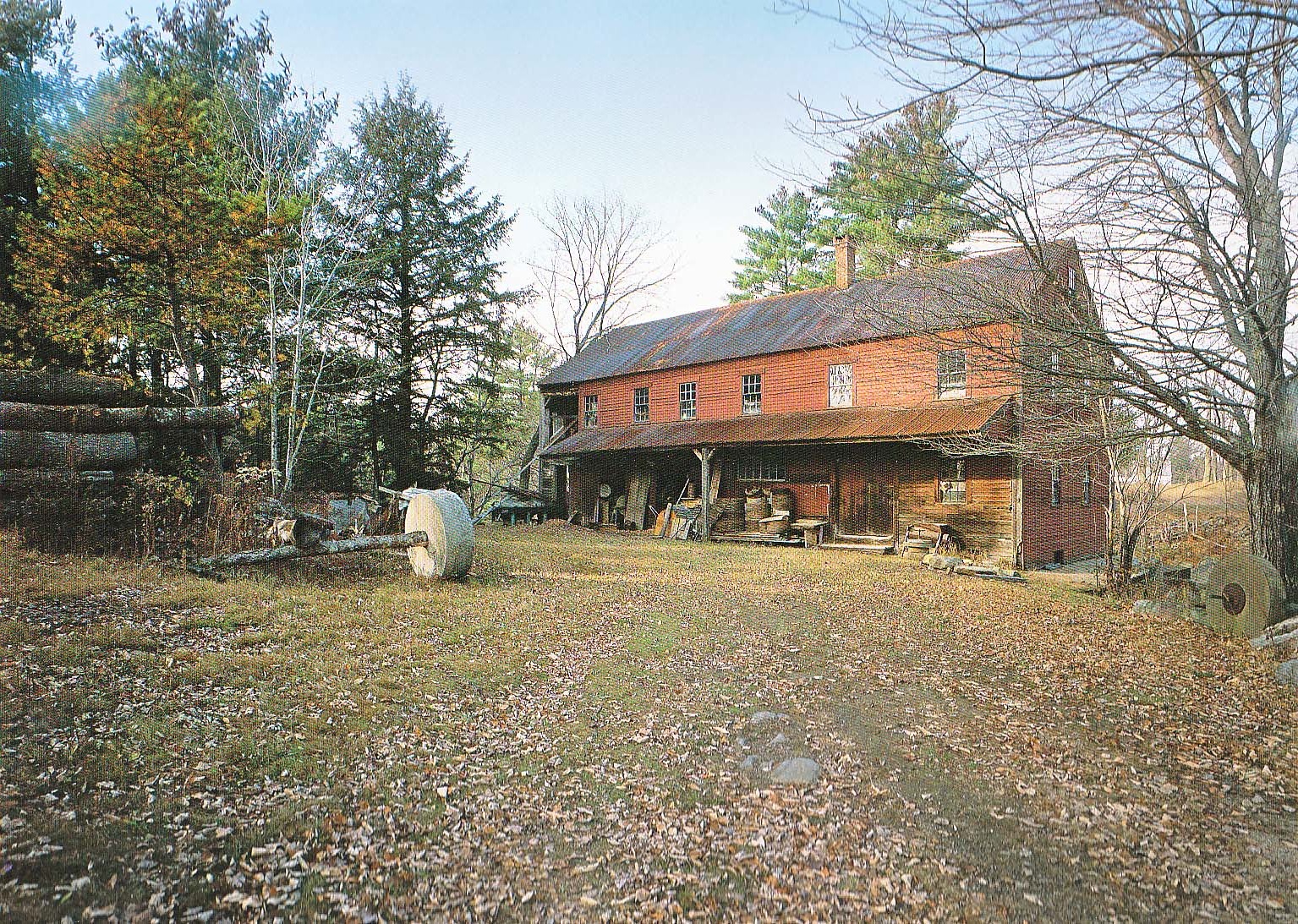In referring to the indigenous mill buildings found in the New England landscape, this house attempts to mediate between the natural elements of the pine woods to the north and the tidal river to the south. The building saddles a stone wall found on the site. It marks the border of a farm meadow dating from the original land grants of the eighteenth century. The linear arrangement of the site is reinforced by the parallel alignment of the road and river below. The orientation of the main living rooms also modulates a rural panoramic progression from a village to the west, an isolated farmhouse to the south and the forest to the east.
A three-story barn on the uphill side of the site acts as a vertical component to anchor the house and provide a datum for a series of shed roofs which step down the hill and respond to views of the river and landscape beyond. The architectural promenade begins at the entry porch along a circulation spine which separates the services areas to the north from the public spaces to the south, continues up the stairs to a library with views back to the river through a double height volume of the dining room and ends on the top floor in a covered terrace at tree top.
The exterior cladding is flush boards revealed to relate to the concrete block masonry chimney. The recessed banding of the chimney refers in turn to the grid of the floor to ceiling mahogany windows. The unpretentious materials extend from the floors and stairs of yellow southern pine to the galvanized steel roofs.
Photos: Brian Van den Brink
